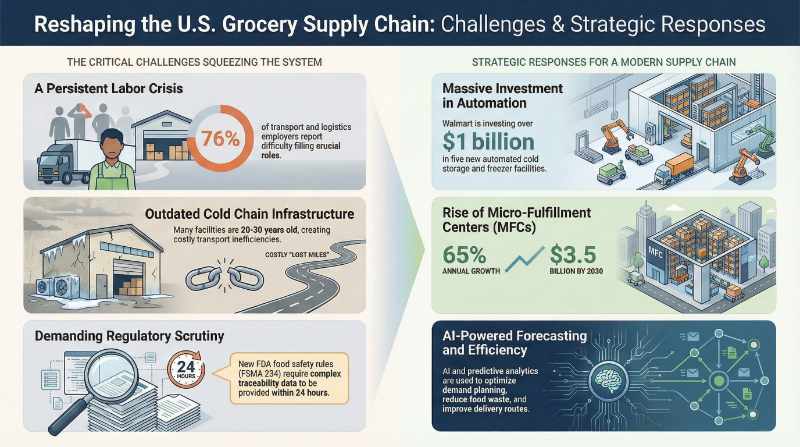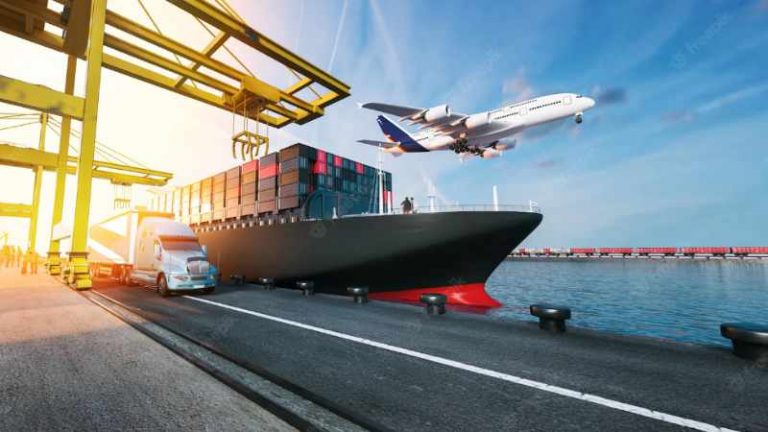The logistics industry has undergone a structural transformation since COVID-19. The Council of Supply Chain Management Professionals (CSCMP) reports that North-American freight volumes rose 12 % in 2021 versus 2019, driven by booming food e-commerce (CSCMP, 2023). Logistics became a strategic pillar for food security during lock-downs. External shocks—such as the war in Ukraine—pushed U.S. diesel prices to an all-time high of USD 5.81 gal⁻¹ in June 2022 (U.S. EIA, 2022), underscoring the urgency for resilient, tech-enabled networks.
Outsourcing is no longer optional: 72 % of Fortune 500 companies now use at least one 3PL provider (Armstrong & Associates, 2023). Contract logistics typically lowers operating costs by 15–30 % while adding real-time visibility through integrated WMS, RFID and GPS platforms (Manhattan Associates, 2023). Contrary to the myth that control is lost, professional 3PLs enhance inventory accuracy and on-time delivery through predictive analytics and IoT sensors.
U.S. grocery retail sales reached USD 2.4 trillion in 2023 (USDA ERS, 2023). Up to 30 % of perishables are lost before reaching consumers, partly owing to ageing “hub-and-spoke” distribution centres (FAO, 2022). Walmart is investing USD 1.4 billion in five automated perishables DCs, including a 725,000 ft² facility in Spartanburg, SC, that uses Symbotic robots and AI-driven temperature control to cut waste and mileage (Walmart, 2023).

Transportation and warehousing recorded an 8.5 % job-vacancy rate in 2023—double the national average (U.S. BLS, 2023). During the pandemic, U.S. processed-food output fell 12 % (FRED, 2020). In response, deployments of AGVs in food warehouses grew 47 % between 2020 and 2023 (Interact Analysis, 2024). Big-Data-driven routing and IoT cold-chain monitors are now baseline investments for risk mitigation and business continuity.
FDA’s Final Rule on Traceability (FSMA Section 204) requires Key Data Elements (KDEs) at Critical Tracking Events (CTEs) such as receiving, transformation and shipping. Companies must deliver electronic traceability records within 24 h of an FDA request; the compliance deadline has been proposed to July 2028 to allow full supply-chain interoperability (FDA, 2023). The average cost of a food recall is USD 10 million (FMI, 2023).
Logistics has evolved from cost centre to competitive differentiator. AI-powered demand forecasting can cut food waste by 20–30 % and increase grocery margins by 2–3 % (McKinsey, 2023). Aligning with FSMA traceability, automating cold chains and leveraging 3PL expertise are no longer optional—they are the licence to operate in the global food marketplace.

References (all URLs verified May 2025) CSCMP. 2023 State of Logistics Report. https://cscmp.org/research
U.S. EIA. Weekly Retail Diesel Prices, June 2022. https://www.eia.gov/dnav/pet/pet_pri_gnd_dcus_nus_w.htm
Armstrong & Associates. 2023 3PL Market Report. https://www.3plogistics.com
Manhattan Associates. 2023 WMS & RFID Integration White Paper. https://www.manh.com/resources
USDA ERS. Food Dollar Series 2023. https://www.ers.usda.gov/data-products/food-dollar-series/
FAO. Cold-Chain Food Losses in North America, 2022. https://www.fao.org/north-america/publications
Walmart. Press Release: Spartanburg High-Tech Perishables DC, July 2023. https://corporate.walmart.com/news/2023/07/12/walmart-opens-high-tech-perishables-distribution-center
U.S. BLS. Job Openings and Labor Turnover Survey, 2023. https://www.bls.gov/jlt/
FRED. Industrial Production Index: Food Manufacturing, April 2020. https://fred.stlouisfed.org/series/IPG311N
Interact Analysis. Warehouse Automation Market 2024. https://www.interactanalysis.com
FDA. FSMA Section 204 Traceability; Proposed Extension to 2028. https://www.fda.gov/food/fsma-section-204-traceability
Food Marketing Institute. Recall Ready Report 2023. https://www.fmi.org/research
McKinsey & Company. AI in Food Supply Chains, 2023. https://www.mckinsey.com/industries/agriculture/our-insights



